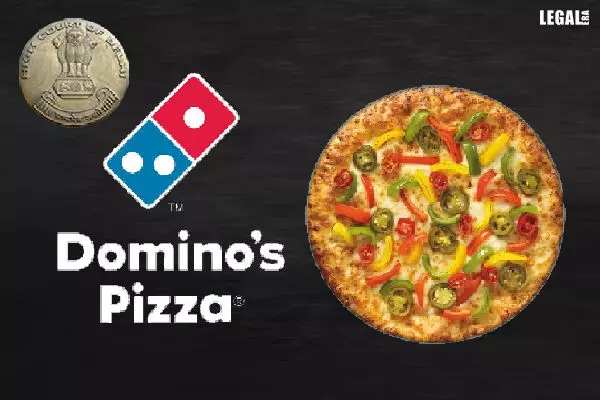- Home
- News
- Articles+
- Aerospace
- Artificial Intelligence
- Agriculture
- Alternate Dispute Resolution
- Arbitration & Mediation
- Banking and Finance
- Bankruptcy
- Book Review
- Bribery & Corruption
- Commercial Litigation
- Competition Law
- Conference Reports
- Consumer Products
- Contract
- Corporate Governance
- Corporate Law
- Covid-19
- Cryptocurrency
- Cybersecurity
- Data Protection
- Defence
- Digital Economy
- E-commerce
- Employment Law
- Energy and Natural Resources
- Entertainment and Sports Law
- Environmental Law
- Environmental, Social, and Governance
- Foreign Direct Investment
- Food and Beverage
- Gaming
- Health Care
- IBC Diaries
- In Focus
- Inclusion & Diversity
- Insurance Law
- Intellectual Property
- International Law
- IP & Tech Era
- Know the Law
- Labour Laws
- Law & Policy and Regulation
- Litigation
- Litigation Funding
- Manufacturing
- Mergers & Acquisitions
- NFTs
- Privacy
- Private Equity
- Project Finance
- Real Estate
- Risk and Compliance
- Student Corner
- Take On Board
- Tax
- Technology Media and Telecom
- Tributes
- Viewpoint
- Zoom In
- Law Firms
- In-House
- Rankings
- E-Magazine
- Legal Era TV
- Events
- Middle East
- Africa
- News
- Articles
- Aerospace
- Artificial Intelligence
- Agriculture
- Alternate Dispute Resolution
- Arbitration & Mediation
- Banking and Finance
- Bankruptcy
- Book Review
- Bribery & Corruption
- Commercial Litigation
- Competition Law
- Conference Reports
- Consumer Products
- Contract
- Corporate Governance
- Corporate Law
- Covid-19
- Cryptocurrency
- Cybersecurity
- Data Protection
- Defence
- Digital Economy
- E-commerce
- Employment Law
- Energy and Natural Resources
- Entertainment and Sports Law
- Environmental Law
- Environmental, Social, and Governance
- Foreign Direct Investment
- Food and Beverage
- Gaming
- Health Care
- IBC Diaries
- In Focus
- Inclusion & Diversity
- Insurance Law
- Intellectual Property
- International Law
- IP & Tech Era
- Know the Law
- Labour Laws
- Law & Policy and Regulation
- Litigation
- Litigation Funding
- Manufacturing
- Mergers & Acquisitions
- NFTs
- Privacy
- Private Equity
- Project Finance
- Real Estate
- Risk and Compliance
- Student Corner
- Take On Board
- Tax
- Technology Media and Telecom
- Tributes
- Viewpoint
- Zoom In
- Law Firms
- In-House
- Rankings
- E-Magazine
- Legal Era TV
- Events
- Middle East
- Africa
Delhi High Court Restricts Food Outlets In NCR From Using Marks Similar To Domino’s

Delhi High Court Restricts Food Outlets In NCR From Using Marks Similar To Domino’s
Orders food delivery platforms Zomato and Swiggy to delist the eateries from mobile apps and websites
After Domino's Pizza sued some food outlets over trademark infringement, the Delhi High Court has restrained Domino, Domino's, Dominon, Domino's, Dominoz, Domino's and Domain’s from using the multinational restaurant chain’s marks in the national capital region.
The bench comprising Justice Sanjeev Narula also directed food delivery platforms Zomato and Swiggy to delist, takedown and suspend the outlets from their mobile applications and websites.
Domino's claimed that the food outlets unauthorizedly adopted trade names, identical and deceptively similar to its marks. It alleged that the impugned marks were used to operate imitator brand outlets on online delivery platforms. The food outlets were taking unfair advantage of the search results by typing the first letters of its trade name and mark Dom, Domi, Domin and Domino.
The court observed that the food outlets had utilized the marks prima facie identical to Domino's' registered trademarks.
Thus, Justice Narula stated, “The impugned marks not only replicate all the distinctive elements of the plaintiff’s registered trademarks but are also phonetically, visually, and structurally akin to them. Moreover, these marks are presented in a manner identical to the plaintiffs' brand/trademark ‘Domino's’ on the online platforms managed by defendants No.9 (Zomato) and 10 (Swiggy).”
The bench added that since the impugned marks were associated with food products widely marketed and consumed across diverse demographic segments, the potential for misrepresentation carried significant consumer impact.
The judge stated, “The court must apply a more stringent standard in evaluating the probable effects of such misrepresentation on public perception and the integrity of the plaintiffs' brand identity.”



